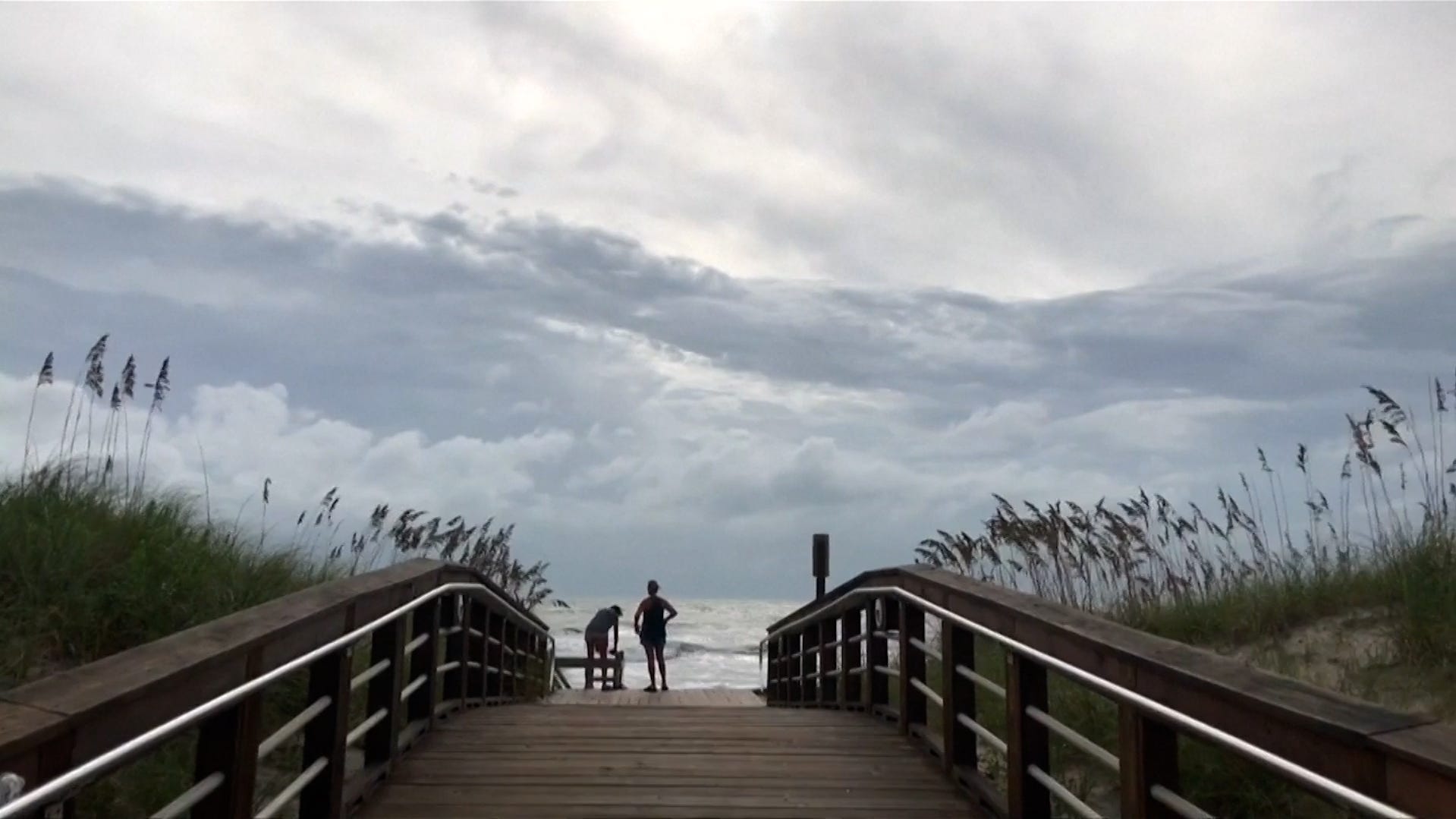Tropical Storm Gil briefly becomes hurricane: See tracker
Tropical Storm Gil strengthened to become a hurricane in the Pacific Ocean before weakening again, according to the National Hurricane Center.

Tropical Storm Gil strengthened to become a hurricane in the Pacific Ocean before weakening again into a tropical storm, the National Hurricane Center said Aug. 2.
As of 5 a.m. Hawaii Standard Time on Saturday, Aug. 2, Tropical Storm Gil was about 1,250 miles west of the southern tip of Baja California, far from the Hawaiian islands. There are no coastal watches or warnings in effect, according to the hurricane center, part of the National Weather Service. Gil was a tropical storm on Friday, Aug. 1, before becoming a hurricane overnight. Then, it was downgraded back to a tropical storm on Saturday morning.
When a tropical storm's winds reach 74 mph, the storm officially becomes a hurricane.
Maximum sustained winds decreased to 70 mph with higher gusts, forecasters said. Tropical storm-force winds extended outward to 140 miles from Gil's center.
The storm is expected to continue weakening through the weekend, the hurricane center said. It will be come post-tropical as early as Sunday. It was moving west-northwest near 20 mph, and it was expected to continue through the weekend. By Monday, the system is forecast to move more slowly westward.
Also in the Pacific, Tropical Depression Iona, over 1,400 miles west of Honolulu, continued weakening as it was expected to cross the International Date Line on Saturday, according to a hurricane center advisory.
Tropical Storm Gil path tracker
This forecast track shows the most likely path of the center of the storm. It does not illustrate the full width of the storm or its impacts, and the center of the storm is likely to travel outside the cone up to 33% of the time.
Tropical Storm Gil spaghetti models
This forecast track shows the most likely path of the center of the storm. It does not illustrate the full width of the storm or its impacts, and the center of the storm is likely to travel outside the cone up to 33% of the time.
How do hurricanes form?
Hurricanes are born in the tropics, above warm water. Clusters of thunderstorms can develop over the ocean when water temperatures exceed 80 degrees Fahrenheit. If conditions are right, the clusters swirl into a storm known as a tropical wave or tropical depression.
A tropical depression becomes a named tropical storm once its sustained wind speeds reach 39 miles per hour. When its winds reach 74 mph, the storm officially becomes a hurricane.
Prepare now for hurricanes
Delaying potentially life-saving preparations could mean waiting until it’s too late. "Get your disaster supplies while the shelves are still stocked, and get that insurance checkup early, as flood insurance requires a 30-day waiting period," NOAA recommends.
- Develop an evacuation plan: If you are at risk from hurricanes, you need an evacuation plan. Now is the time to begin planning where you would go and how you would get there.
- Assemble disaster supplies: Whether you’re evacuating or sheltering-in-place, you’re going to need supplies not just to get through the storm but for the potentially lengthy aftermath, NOAA said.
- Get an insurance checkup and document your possessions: Contact your insurance company or agent now and ask for an insurance check-up to make sure you have enough insurance to repair or even replace your home and/or belongings. Remember, home and renters insurance doesn’t cover flooding, so you’ll need a separate policy for it. Flood insurance is available through your company, agent, or the National Flood Insurance Program. Act now, as flood insurance requires a 30-day waiting period.
- Create a family communication plan: NOAA said to take the time now to write down your hurricane plan, and share it with your family. Determine family meeting places, and make sure to include an out-of-town location in case of evacuation.
- Strengthen your home: Now is the time to improve your home’s ability to withstand hurricane impacts. Trim trees; install storm shutters, accordion shutters, and/or impact glass; seal outside wall openings.